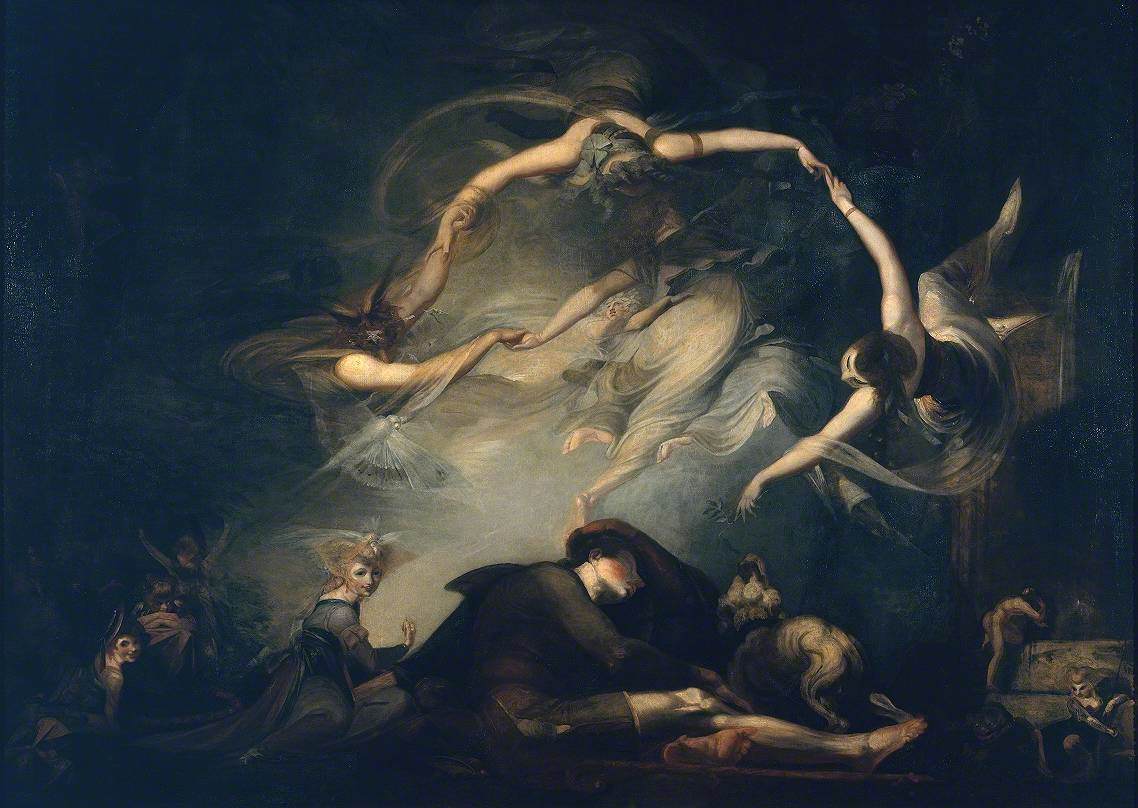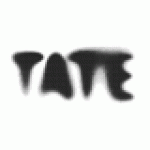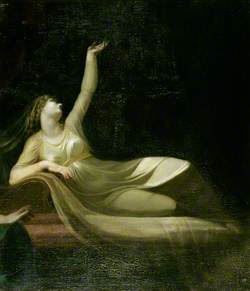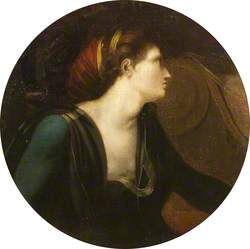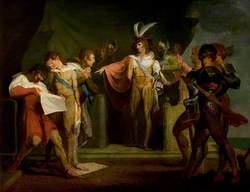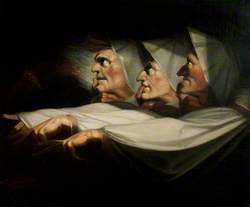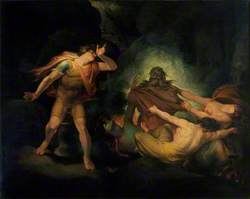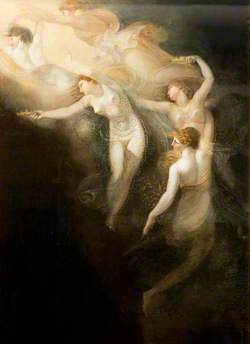How you can use this image
This image is available to be shared and re-used under the terms of the Creative Commons Attribution-NonCommercial-NoDerivatives licence (CC BY-NC-ND).
You can reproduce this image for non-commercial purposes and you are not able to change or modify it in any way.
Wherever you reproduce the image you must attribute the original creators (acknowledge the original artist(s) and the person/organisation that took the photograph of the work) and any other rights holders.
Review our guidance pages which explain how you can reuse images, how to credit an image and how to find more images in the public domain or with a Creative Commons licence available.
DownloadNotes
Add or edit a note on this artwork that only you can see. You can find notes again by going to the ‘Notes’ section of your account.
Fuseli was introduced to the poetry of John Milton (1608–1674) during his student days in Zürich with the Swiss scholar Jacob Bodmer. 'Paradise Lost' held a special appeal for him, and other Romantic artists, in that it explores the realms of the imagination, dreams and the supernatural. The picture illustrates a moment in Milton's poem where he compares the fallen angels in the Hall of Pandemonium in Hell to the fairies who bewitch a passing peasant with the sound of their music and dancing: 'Fairy Elves, Whose midnight revels by a forest side Or fountain some belated peasant sees, Or dreams he sees, while over head the moon Sits arbitress, and nearer to the earth Wheels her pale course, they on their mirth and dance Intent, with jocund music charm his ear; At once with joy and fear his heart rebounds'.
The building on the right possibly represents the Temple of Diana, since according to Medieval folklore Diana was transformed into a demon and led an army of witches through the sky by night. Alternatively, Fuseli may have intended it to represent the ivory portal, described by Homer and Virgil, through which delusive dreams emerge. The picture was painted by Fuseli for his Milton Gallery and is based on a more detailed drawing in pencil, red chalk and wash (Albertina, Vienna), exhibited at the Royal Academy in 1786.
Further reading: 'Henry Fuseli 1741–1825', exhibition catalogue, Tate Gallery, London 1975, pp.87–88, reproduced p.87. Jeremy Maas, 'Victorian Fairy Painting', exhibition catalogue, Royal Academy of Arts, London 1997. Frances Fowle December 2000
Title
The Shepherd's Dream, from 'Paradise Lost'
Date
1793
Medium
Oil on canvas
Measurements
H 154.3 x W 215.3 cm
Accession number
T00876
Acquisition method
Purchased 1966
Work type
Painting
